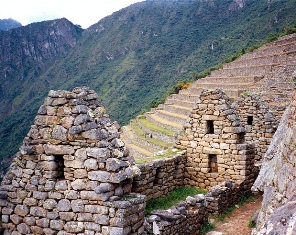Are you interested in learning about the ancient hydraulic engineering of Machu Picchu? If so, read our guide for more facts and information…
Machu Picchu is truly one of the most interesting feats of engineering during it’s time. These ancient ruins are situated 8000 feet above sea level. The ruins consist of 200 structures and 700 terraces made from stone.
Hydraulic/Drainage System
Incredibly, it is not so much the isolated buildings which are the most interesting. It is the underground network of complicated engineering which is the most astounding thing about Machu Picchu.
This engineering has enabled the buildings to survive approximately 76 inches of rain every year for 500 years!
There are more than 100 drains used to divert water down the mountain when it rains. There are 16 fountains which can hold as much as 30 gallons of water (which they do, depending on the time of the year). These fountains were used to provide water to around 1000 people.
Machu Picchu Civil Engineering
The civil engineering of Machu Picchu does not just include the hydraulic engineering. The terraces that were created were not just to beautify the place. These terraces were also constructed to protect the soil from erosion resulting from the rain. The terraces were also constructed in a manner so as to protect them from the destruction of earthquakes.
What makes these hydraulic and civil engineering even more interesting is the fact that they were constructed without the use of the wheel and steel, which the Incas did not have at that time. The Incas involved in this project faced difficulties such as steep slopes and 2,000 mm of rain per year, resulting in the perfect conditions for landslides. It is for this reason that experts state that Machu Picchu civil engineering is the best ancient engineering discovered yet.
Machu Picchu Tourism
This incredible engineering achievement, coupled with the beauty and history of the ruins makes Machu Picchu one of the most visited ancient sites in South America, indeed the world. The Peruvian government has turned this into the biggest tourist attraction in the country, with many well run and maintained hiking trails leading to Machu Picchu from the nearest town, Cusco. Quicker and more comfortable transport to the ruins include efficient and well kept trains from Cusco to Agua Calientes, the town in the valley below the ruins. From Aguas Calientes there are comfortable Mercedes Benz busses which shuttle tourists to the ruins.
Costs of the train tickets begin at USD$48. One can take a train straight to Aguas Calientes, or get off the train at Ollantaytambo and then catch a taxi to Aguas Calientes. The taxi costs USD$25 per trip. There are also buses for just USD$2 per seat. The trail from Aguas Calientes to the ruins is short and will take just a few hours depending on the hiking pace. Guides and porters are available for hire in Aguas Calientes to assist with the hike and to provide interesting information on the history and engineering of the ruins.





